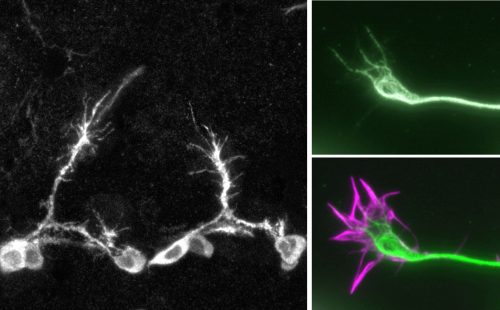BBSRC White Rose PhD studentship in stem cell biology
Posted by Anestis Tsakiridis, on 15 November 2019
Closing Date: 15 March 2021
A BBSRC-funded PhD studentship is available for a joint project between the labs of Anestis Tsakiridis (https://www.tsakiridislab.com/) and Dan Bose (http://www.bose-lab.com/) at the University of Sheffield.
Project description:
Non-coding DNA regulatory elements or enhancers control tissue and region-specific expression of critical developmental regulators thus playing a crucial role in the correct formation of the embryonic body. However, not much is known how regionalized gene expression is achieved through enhancer action. The proposed PhD project aims to address this issue using the development of the nervous system as a paradigm. During embryogenesis, the brain and the spinal cord are derived from different progenitors and this process is controlled to a large extent by the transcription factor Sox2. Sox2 expression into these two components of the nervous system is directed by two distinct enhancers, N1 in the spinal cord and N2 in the brain. This PhD project will employ brain and spinal cord progenitors derived from human pluripotent stem cells (hPSCs) in order to dissect the function of these two enhancers. Using hPSC differentiation in combination with a variety of techniques including ChiP-seq and CRISPR/Cas9 approaches we aim to:
1) define the molecular hallmarks that may distinguish the N1 and N2 enhancers
2) examine the differential binding of candidate transcription factors on these enhancers
3) identify critical sequence parameters influencing their function.
Funding Notes
– a tax-free stipend at the standard Research Council rate (~£15,009, to be confirmed for 2020) for 4 years
– tuition fees at the UK/EU rate for 4 years.
– research costs
Required qualifications
At least a 2:1 honours degree in a relevant subject or equivalent. The interdisciplinary nature of this programme means that we welcome applications from students with backgrounds in any biological, chemical, and/or physical science, students with mathematical backgrounds who are interested in using their skills in addressing biological questions.
Studentships are available to UK and EU students who meet the UK residency requirements. Further information on eligibility: View Website.
Deadline: Monday, January 06, 2020
For informal enquiries contact: a.tsakiridis@sheffield.ac.uk


 (No Ratings Yet)
(No Ratings Yet) Cell adhesion molecules (CAMs) of the plasma membrane physically tie cells together into tissues, both via interaction of cells with other cells or with ECM (extracellular matrix); they also constitute hubs of information exchange with neighbouring cells and the environment. CAMs mediate a broad range of biological functions and their aberration contributes to a range of diseases, such as cancer progression or aberrant growth/regeneration of nerves.
Cell adhesion molecules (CAMs) of the plasma membrane physically tie cells together into tissues, both via interaction of cells with other cells or with ECM (extracellular matrix); they also constitute hubs of information exchange with neighbouring cells and the environment. CAMs mediate a broad range of biological functions and their aberration contributes to a range of diseases, such as cancer progression or aberrant growth/regeneration of nerves.
 (1 votes)
(1 votes)